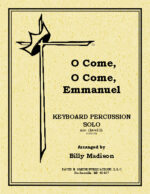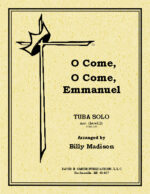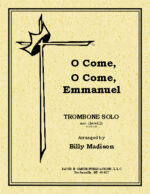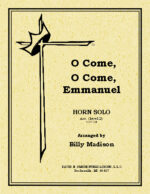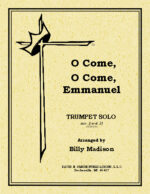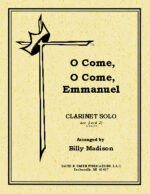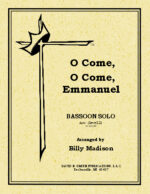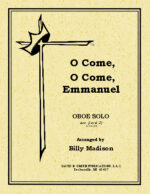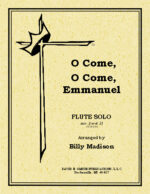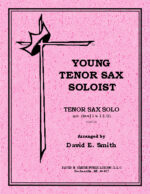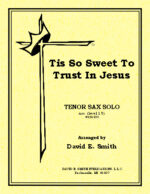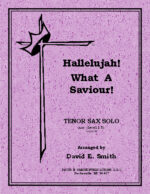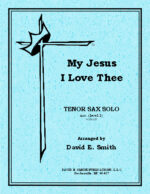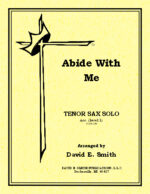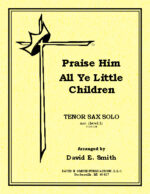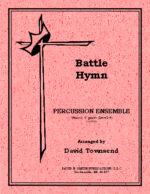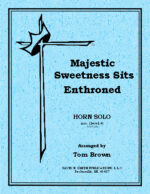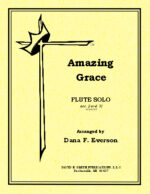-
O Come, O Come Emmanuel
$4.00A solo with piano accompaniment. After a solid introduction the arrangement presents the melody with a simple statement. After several melodic statements the soloist then presents itself with a delightful counterline. It is finalized with declamation.
-
O Come, O Come Emmanuel
$4.00A solo with piano accompaniment. After a solid introduction the arrangement presents the melody with a simple statement. After several melodic statements the soloist then presents itself with a delightful counterline. It is finalized with declamation.
-
O Come, O Come Emmanuel
$4.00A solo with piano accompaniment. After a solid introduction the arrangement presents the melody with a simple statement. After several melodic statements the soloist then presents itself with a delightful counterline. It is finalized with declamation.
-
O Come, O Come Emmanuel
$4.00A solo with piano accompaniment. After a solid introduction the arrangement presents the melody with a simple statement. After several melodic statements the soloist then presents itself with a delightful counterline. It is finalized with declamation.
-
O Come, O Come Emmanuel
$4.00A solo with piano accompaniment. After a solid introduction the arrangement presents the melody with a simple statement. After several melodic statements the soloist then presents itself with a delightful counterline. It is finalized with declamation.
-
O Come, O Come Emmanuel
$4.00A solo with piano accompaniment. After a solid introduction the arrangement presents the melody with a simple statement. After several melodic statements the soloist then presents itself with a delightful counterline. It is finalized with declamation.
-
O Come, O Come Emmanuel
$4.00A solo with piano accompaniment. After a solid introduction the arrangement presents the melody with a simple statement. After several melodic statements the soloist then presents itself with a delightful counterline. It is finalized with declamation.
-
O Come, O Come Emmanuel
$4.00A solo with piano accompaniment. After a solid introduction the arrangement presents the melody with a simple statement. After several melodic statements the soloist then presents itself with a delightful counterline. It is finalized with declamation.
-
O Come, O Come Emmanuel
$4.00A solo with piano accompaniment. After a solid introduction the arrangement presents the melody with a simple statement. After several melodic statements the soloist then presents itself with a delightful counterline. It is finalized with declamation.
-
O Come, O Come Emmanuel
$4.00A solo with piano accompaniment. After a solid introduction the arrangement presents the melody with a simple statement. After several melodic statements the soloist then presents itself with a delightful counterline. It is finalized with declamation.
-
O Come, O Come Emmanuel
$4.00A solo with piano accompaniment. After a solid introduction the arrangement presents the melody with a simple statement. After several melodic statements the soloist then presents itself with a delightful counterline. It is finalized with declamation.
-
Young Tenor Sax Soloist
$12.95A solo collection with piano including: “Praise Him All Ye Little Children,” “Abide With Me,” “Dare To Be A Daniel,” “My Jesus I Love Thee,” “Away In A Manger,” “We Gather Together,” ” “Hallelujah! What A Saviour,” and “‘Tis So Sweet To Trust In Jesus.”
-
Tis So Sweet To Trust In Jesus
$3.50This solo with piano is structured in a quasi-rondo form. Thus making a great deal of variety in texture, style, and dynamic.It will make the young performer sound more advanced.
-
Hallelujah! What A Saviour!
$3.50This solo with piano follows a simple theme and variation form. It gives the young soloist the opportunity to play many styles in a short framework.
-
Away In A Manger
$3.50This solo with piano begins with the portrayal of a pastoral setting. The arrangement incorporates both “Flow Gently Sweet Afton” and “Luther’s Hymn”.
-
My Jesus I Love Thee
$3.50This solo with piano begins with a modified melodic statement. It enters into a second section with simple obligati and then returns to a beginning-like statement and ends with a simple coda.
-
Abide With Me
$3.50This solo piece with piano is presented in a straight-forward manner for the younger player with some altered pitches for interest.
-
Dare To Be A Daniel
$3.50This solo with piano begins with the strains of a lion’s roar. Next enters Daniel in a simple fashion followed by a statement in a triumphal march. The lions return-Daniel prevails.
-
Praise Him All Ye Little Children
$3.50This solo with piano begins with a bold march statement with an elongated rhythm of the melody. The middle section is more expressive while the final section imitates the beginning, with a solid statement of faith.
-
Battle Hymn
$6.50A mallet solo with piano accompaniment, this rendition of the “Battle Hymn” is in a march style with the opening solo part featuring a catchy, obligato figure. The ending section uses duet writing in the solo line.
-
Battle Hymn
$17.95Scoring is for 5 mallet parts, tympani, and 3 general percussion parts. The piece is in a march style and has militaristic as well as expressive sections. The piece ends in a blaze of glory.
-
Majestic Sweetness Sits Enthroned
$5.75The traditions of this tune and its words run long and deep. The beginning is a simple statement of the tune and is so ever carefully embellished as the piece progresses. It sets the mood for careful reflection as well.
-
Amazing Grace
$5.00This solo opens with a gentle, Celtic fashion in a duple meter. It progresses through a series expressive obbligati giving a sense of elevation. As it nears the end it modulates metrically and harmonically to a triple meter, and then final repose.

